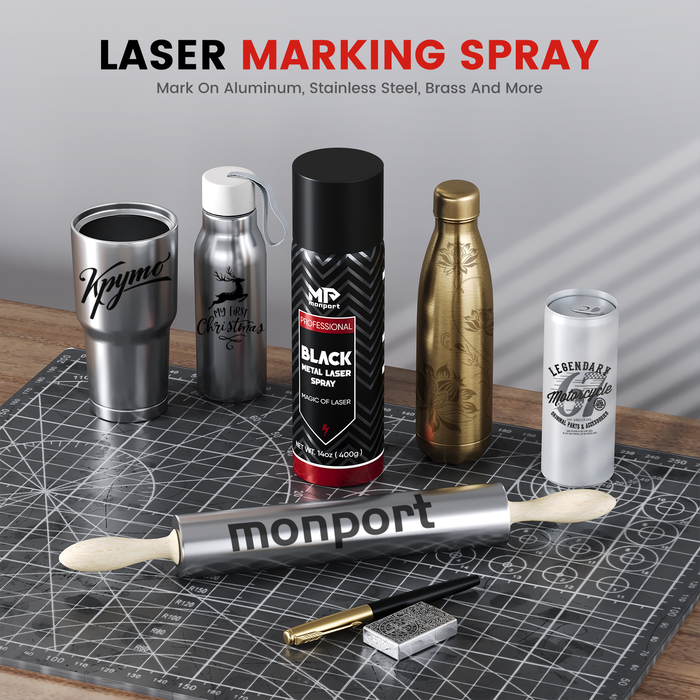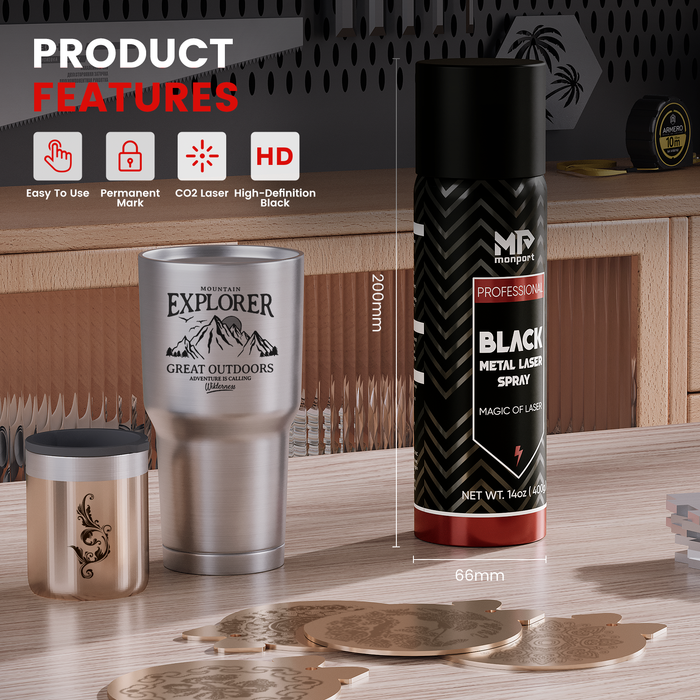What is MOPA Fiber Laser?
A MOPA fiber laser (Master Oscillator Power-Amplifier) refers to a laser structure comprising a laser oscillator and an amplifier cascaded together. In the industrial realm, a MOPA fiber laser specifically denotes a unique, more "intelligent" nanosecond pulsed laser marking machine consisting of a semiconductor laser seed source driven by electric pulses and a fiber amplifier.Its "intelligence" primarily lies in the independently adjustable output pulse width (ranging from 2ns to 500ns) and a repetition frequency that can reach up to megahertz.For industries seeking a good laser cutter, the MOPA laser is a prime choice.
The MOPA fiber laser allows for independent adjustment of the output pulse width. The pulse width of a MOPA fiber laser is arbitrarily adjustable within a range of 2ns to 500ns. A narrower pulse width results in a smaller heat-affected zone, leading to higher processing precision. A good laser cutter like this can achieve high-frequency output up to MHz, implying higher processing efficiency. Even at high frequencies, MOPA can maintain high peak power characteristics. Black laser marking spray is also often used in conjunction with MOPA lasers for optimized contrast and clarity in marking results.

Applications of MOPA fiber lasers
The parameters of MOPA fiber lasers have a wide adjustment range. Therefore, besides covering conventional nanosecond laser processing applications, they can also be utilized for unique precision processing applications due to their narrow pulse width, high frequency, and high peak power. For those seeking a good laser marking machine, MOPA fiber lasers provide unmatched versatility. For example:

-
Surface removal application of alumina thin plates: As modern electronic products become thinner, many devices like mobile phones, tablets, and computers employ thin alumina as their outer casing material. A good laser cutter, such as a MOPA laser, prevents material deformation, resulting in finer and brighter patterns. This is because the use of smaller pulse width parameters in MOPA lasers reduces the time the laser stays on the material while still providing sufficient energy to remove the anodized layer. Therefore, for surface removal of anodized layers on thin alumina plates, a MOPA laser is the preferred choice. Black laser marking spray can further enhance visibility on lighter materials during this process.

-
Anodized alumina blackening application: Laser marking black logos, models, and text on anodized aluminum surfaces is increasingly common in electronic products' casings by manufacturers like Apple, Samsung, and LG. Currently, only MOPA lasers are capable of processing such applications. Due to their wide range of pulse width and frequency adjustments, MOPA lasers can achieve black marking effects on the surface. Different combinations of parameters can produce markings of various grayscale intensities. A good laser cutter, like a MOPA laser, excels in these applications due to its wide range of parameter settings. Black laser marking spray can also be applied to ensure uniform blackness and depth during marking.

-
Color laser marking: Color laser marking is a novel laser marking technique. Currently, only MOPA fiber lasers can produce colored patterns on metal materials such as stainless steel, chromium, and titanium. When marking colors on stainless steel, adjusting the laser marking machine beam can change the surface layer's color, resulting in different decorative effects. For the stainless steel products industry, adding colored markings enhances product aesthetics, provides versatility in designing various patterns, is environmentally friendly and pollution-free, increases marking speed, significantly enhances product added value, and strengthens product competitiveness. A good laser marking machine like the MOPA fiber laser produces colored patterns on metal materials such as stainless steel, chromium, and titanium.

- Precision processing applications in electronics, semiconductors, and ITO: Precise line applications are often required in electronics, semiconductors, and ITO precision processing. Q-switched lasers, due to their inherent architecture, cannot adjust pulse width parameters, resulting in less precise lines. In contrast, MOPA lasers, with their flexible pulse width and frequency parameter adjustments, can produce finer lines with smooth edges.

In summary, a good laser marking machine, such as a MOPA fiber laser, offers independently adjustable pulse widths and frequencies, excelling in applications like marking alumina, blackening anodized alumina, and color marking stainless steel. MOPA fiber lasers offer independently adjustable pulse widths and frequencies, as well as a wide range of adjustment parameters, resulting in fine processing with low thermal effects. They excel in applications such as marking alumina, blackening anodized alumina, and color marking stainless steel, offering effects that Q-switched fiber lasers cannot achieve. While Q-switched fiber lasers have advantages in strong marking intensity and deep engraving of metals, their marking effects tend to be rougher. In common marking applications, the main characteristics of MOPA fiber lasers and Q-switched fiber lasers are compared as shown in the table below. Users can choose the appropriate laser marking machine based on their actual needs for marking materials and effects.
|
Application |
Q-switched Fiber Laser |
MOPA Fiber Laser |
|
Surface removal of alumina thin plates |
Material prone to deformation, forming protrusions, rough patterns |
Using small pulse width, low residual heat, no material deformation, fine and bright patterns |
|
Blackening of anodized alumina |
Limited quality blackening |
Different shades of blackening and graying can be achieved through wide parameter settings |
|
Metal deep engraving |
Strong intensity, suitable for deep engraving, rough patterns |
Weak engraving depth, but fine patterns, small taper, can be brightened |
|
Color marking on stainless steel |
Requires defocusing, difficult to control the effect |
Various colors can be achieved by adjusting pulse width and frequency combinations |
|
ABS plastic processing, etc. |
Yellowing effect, heavy feel, fast speed |
No yellowing, fine processing, smooth finish |
|
Peeling paint off translucent plastic buttons |
Difficult to clean thoroughly |
Easy to clean, clear edge contours, better transparency, high efficiency |
|
PCB board marking of barcodes, QR codes |
High single pulse energy, but epoxy resin is sensitive to laser energy |
Clearer barcodes, QR codes with small pulse width, moderate frequency, difficult to remove, easy to scan |
Performance characteristics of MOPA laser marking machine
MOPA laser marking machine belongs to the category of laser marking machines. It adopts a fiber laser based on the direct electric modulation semiconductor laser (MOPA) scheme as the seed source. Compared with Q-switched fiber lasers, the pulse frequency and width of MOPA fiber lasers are independently controllable. Through the adjustment and coordination of these two laser parameters, constant high peak power output and applicability to a wider range of marking substrates can be achieved via a high-speed scanning mirror system. It features high-quality laser beams, low operating costs, maintenance-free for 100,000 hours, and is suitable for marking applications such as blackening of alumina, coloring of 304 stainless steel, stripping anodes, stripping coatings, semiconductor and electronic industries, plastics, and other sensitive materials marking, and PVC plastic pipe industry, marking patterns and fonts are environmentally friendly and comply with ROHS standards. Black laser marking spray can be utilized to optimize marking performance on reflective or light-colored surfaces.

However, many customers expect MOPA fiber laser marking machines to have the same processing speed as ordinary laser marking machine models, which is clearly not the case. These two technologies are different. When engraving color effects, the machine needs to mark at high frequencies with minimal shadow effects, resulting in high resolution but slower engraving speeds. Additionally, in deep metal engraving, MOPA fiber laser marking machines may not have an advantage in terms of single pulse energy, but they excel in fine effects compared to regular laser marking machine models. Therefore, customers need to understand the advantages and disadvantages of this type of laser marking machine before purchasing.

The MOPA fiber laser marking machine is suitable for precision marking processes on both metal and non-metal materials. It can be used for a wide range of applications including laser marking machine engraving of digital product components, mobile phone back covers, iPads, blackening aluminum, marking phone buttons, transparent plastic buttons, electronic components, integrated circuits (ICs), electrical appliances, communication products, sanitary ware, tool accessories, knives, eyewear, watches, jewelry, automotive parts, luggage accessories, kitchenware, stainless steel products, and more.
Finally, the Monport laser marking machine product line offers a wide range of machines with power ranging from 20 to 100 watts. These machines come equipped with powerful features such as automatic focusing, MOPA fiber laser color marking, and more. They offer great value for money, assured quality, and are backed by professional technical support with free after-sales assistance. For further details, please visit monportlaser.com.









